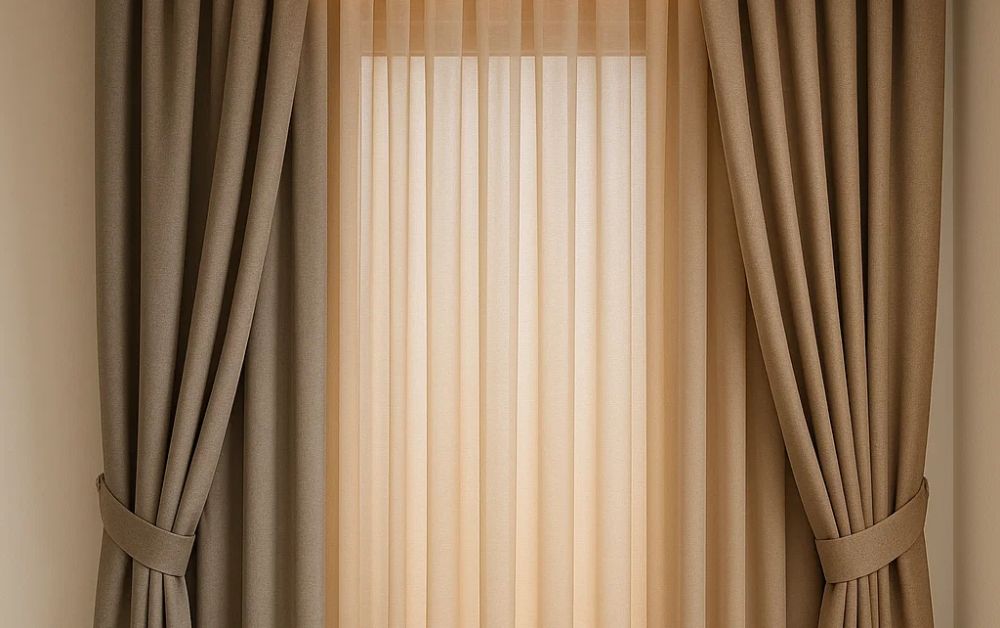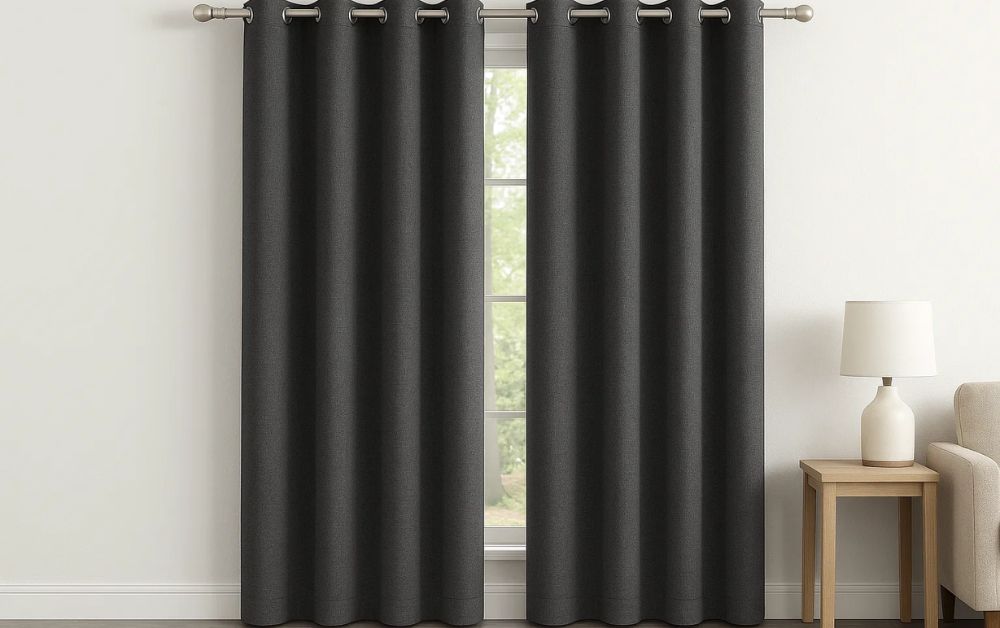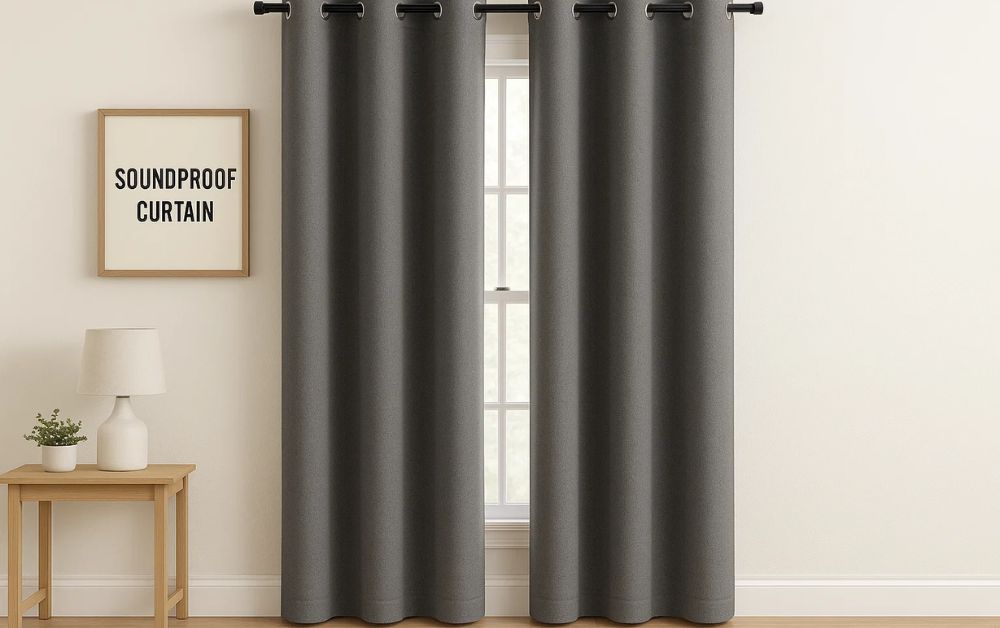Noise pollution is a common problem in urban environments. Whether you live near a busy street, a railway, or a crowded neighborhood, unwanted noise can disrupt sleep, reduce productivity, and negatively impact overall well-being. One of the most effective and versatile solutions for controlling sound indoors is the use of soundproof curtain. These curtains not only block noise but also enhance privacy and improve room aesthetics. In this blog, we’ll explore the types of soundproof curtains that work best for noise reduction and how to choose the right one for your space.

How Do Soundproof Curtains Work?
A soundproof curtain works by absorbing and blocking sound waves, preventing them from entering or leaving a room. Unlike regular curtains, they are made of dense, heavy materials and often feature multiple layers, including thermal linings or acoustic cores. These layers create a barrier that dampens noise, reduces echo, and improves overall acoustic comfort.
Types of Soundproof Curtains
There are several types of soundproof curtains, each designed to address different noise levels and room requirements:
1. Heavy-Duty Fabric Curtains
Heavy-duty fabric curtains are the most common type of soundproof curtain. They are made from thick, densely woven materials such as velvet, polyester, or suede. These curtains are excellent for absorbing mid to high-frequency sounds, such as traffic noise or conversations.
Advantages:
- Affordable and widely available
- Can be used in living rooms, bedrooms, and offices
- Adds a decorative touch while reducing noise
Considerations:
- May not block very low-frequency sounds like bass from subwoofers
- Requires proper coverage and floor-length installation for maximum effectiveness
2. Multi-Layered Acoustic Curtains
Multi-layered acoustic curtains include two or more fabric layers, often with an inner layer of sound-absorbing material. This type of soundproof curtain provides superior noise reduction and is ideal for environments with high noise levels.
Advantages:
- Blocks a wider range of frequencies, including low tones
- Offers thermal insulation benefits in addition to noise reduction
- Long-lasting and durable
Considerations:
- Slightly more expensive than single-layer heavy curtains
- Heavier and may require stronger curtain rods for installation
3. Thermal Soundproof Curtains
Thermal soundproof curtains combine noise reduction with temperature control. They feature thick insulation layers that reduce sound transmission while maintaining room temperature. These curtains are especially useful for homes in noisy urban areas with extreme weather conditions.
Advantages:
- Reduces energy costs by maintaining room temperature
- Effective against both outside noise and indoor echoes
- Available in various styles and colors
Considerations:
- Bulkier than standard curtains
- Installation may require specialized hardware for support
4. Magnetic or Seal-Enhanced Curtains
Some soundproof curtains come with magnetic edges or seal-enhanced designs that attach directly to window frames. These curtains minimize sound leakage around the edges, providing a near-complete acoustic barrier.
Advantages:
- Maximizes noise reduction by sealing gaps
- Ideal for high-traffic areas or street-facing rooms
- Easy to remove and maintain
Considerations:
- More expensive than traditional curtains
- Limited style and color options
5. Combination Curtains
Combination curtains incorporate multiple soundproofing techniques, such as heavy fabric, acoustic cores, and thermal layers. They are ideal for recording studios, home theaters, or bedrooms near very noisy streets.
Advantages:
- Maximum noise reduction
- Offers multiple benefits including insulation and light blocking
- Highly effective for sensitive environments
Considerations:
- Bulky and may require professional installation
- Higher cost than standard soundproof curtains
Tips for Choosing the Right Soundproof Curtain
1. Consider Room Size and Window Coverage: Ensure the curtain fully covers the window and extends beyond the edges to block as much sound as possible.
2. Check Curtain Weight and Material: Heavier curtains with dense fabrics generally provide better soundproofing.
3. Layering: Using two layers or a combination of curtains can significantly enhance noise reduction.
4. Installation: Use sturdy rods or rails that can support the weight of thick acoustic curtains.
Conclusion
A soundproof curtain is a versatile, practical, and aesthetically pleasing solution for reducing unwanted noise in homes, offices, and commercial spaces. From heavy-duty fabric curtains to multi-layered acoustic or thermal designs, there are options to suit every need and budget. For those seeking premium, highly effective soundproofing solutions, Perfect Acoustics shines as a leading provider, offering top-quality soundproof curtains that deliver exceptional noise reduction while enhancing the look and comfort of any space.


